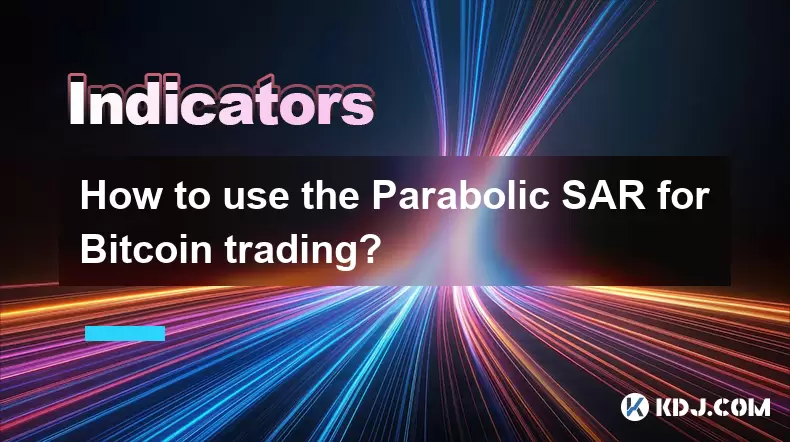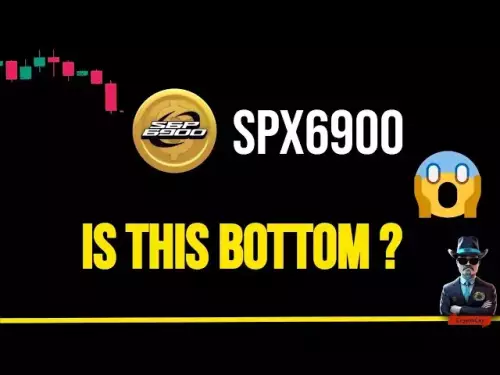-
 Bitcoin
Bitcoin $113100
-1.74% -
 Ethereum
Ethereum $4800
1.16% -
 XRP
XRP $3.041
0.36% -
 Tether USDt
Tether USDt $0.9999
0.02% -
 BNB
BNB $876.6
-0.40% -
 Solana
Solana $205.1
0.96% -
 USDC
USDC $0.0000
0.00% -
 Dogecoin
Dogecoin $0.2345
-0.10% -
 TRON
TRON $0.3629
0.40% -
 Cardano
Cardano $0.9260
1.91% -
 Chainlink
Chainlink $26.20
0.28% -
 Hyperliquid
Hyperliquid $46.04
2.89% -
 Sui
Sui $3.722
0.22% -
 Stellar
Stellar $0.4113
-0.53% -
 Ethena USDe
Ethena USDe $1.000
0.03% -
 Bitcoin Cash
Bitcoin Cash $590.3
0.39% -
 Avalanche
Avalanche $25.82
-0.01% -
 Hedera
Hedera $0.2504
-0.92% -
 Litecoin
Litecoin $119.1
-1.33% -
 UNUS SED LEO
UNUS SED LEO $9.598
0.03% -
 Toncoin
Toncoin $3.315
-1.69% -
 Shiba Inu
Shiba Inu $0.00001308
-1.02% -
 Uniswap
Uniswap $11.06
-2.10% -
 Polkadot
Polkadot $4.149
-1.10% -
 Dai
Dai $1.000
0.03% -
 Aave
Aave $350.7
-1.07% -
 Cronos
Cronos $0.1587
0.97% -
 Bitget Token
Bitget Token $4.664
-0.71% -
 Monero
Monero $274.5
3.42% -
 Ethena
Ethena $0.7021
-4.70%
How to use the Parabolic SAR for Bitcoin trading?
The Parabolic SAR helps Bitcoin traders identify trend reversals with dot-based signals above or below price, ideal for dynamic stop-loss placement and trend confirmation when combined with volume and RSI.
Aug 10, 2025 at 03:01 am

Understanding the Parabolic SAR Indicator in Cryptocurrency Trading
The Parabolic SAR (Stop and Reverse) is a technical analysis tool developed by J. Welles Wilder Jr., designed to identify potential reversals in price movement and determine entry and exit points. In Bitcoin trading, this indicator appears as a series of dots placed either above or below the price candles on a chart. When the dot is below the price, it signals an uptrend, suggesting a bullish momentum. Conversely, when the dot is above the price, it indicates a downtrend, implying bearish pressure. Traders use these signals to align their positions with the prevailing trend.
The formula behind the Parabolic SAR involves an acceleration factor (AF) and an extreme point (EP). The AF starts at 0.02 and increases by 0.02 each time a new EP is recorded, up to a maximum of 0.20. The EP is the highest high in an uptrend or the lowest low in a downtrend. This dynamic adjustment allows the SAR to tighten around the price as momentum increases, making it sensitive to trend changes. For Bitcoin, which often experiences rapid price swings, this responsiveness can be particularly useful in fast-moving markets.
Setting Up Parabolic SAR on a Bitcoin Chart
To apply the Parabolic SAR to Bitcoin price data, traders must first access a charting platform that supports this indicator. Popular platforms include TradingView, MetaTrader 4/5, and Binance’s built-in chart tools. Once the chart is open, follow these steps:
- Navigate to the indicators menu and search for “Parabolic SAR”
- Select the indicator and apply it to the chart
- Adjust the parameters: set the initial step (acceleration factor) to 0.02 and the maximum value to 0.20 (default settings are usually optimal)
- Confirm the application and observe the dots forming relative to the candlesticks
Ensure the timeframe aligns with your trading strategy—short-term traders may use 5-minute or 15-minute charts, while swing traders might prefer 4-hour or daily charts. The Parabolic SAR will automatically update as new candlesticks form, providing real-time signals.
Interpreting Parabolic SAR Signals for Bitcoin Entries and Exits
When the SAR dot flips from above to below the Bitcoin price, it generates a potential buy signal, indicating the start of an uptrend. Traders may open a long position once the next candle confirms the dot’s position beneath the price. Similarly, when the dot moves from below to above the price, it suggests a sell or short signal, marking a potential downtrend.
It is critical to wait for confirmation before acting. For example, if the dot appears below the current candle but the candle is still forming, do not enter immediately. Wait for the candle to close and verify the dot’s placement in the next period. This reduces false signals caused by volatility.
Moreover, during sideways or choppy markets, the Parabolic SAR can produce whipsaws—frequent and misleading signals. To mitigate this, combine the indicator with trend filters such as the 200-period moving average or ADX (Average Directional Index). If Bitcoin is trading above the 200 MA and the SAR dot is below price, the buy signal gains higher reliability.
Using Parabolic SAR with Other Indicators for Confirmation
Relying solely on the Parabolic SAR can lead to losses due to lagging characteristics and volatility in Bitcoin’s price action. Therefore, pairing it with complementary tools improves accuracy. Consider integrating the following:
- Relative Strength Index (RSI): Use RSI to confirm overbought or oversold conditions. A SAR buy signal is stronger when RSI is below 30 (oversold), and a sell signal is reinforced when RSI exceeds 70 (overbought)
- Moving Averages (MA): A 50-period and 200-period MA crossover can validate the trend direction. A SAR signal aligning with a golden cross (50 MA above 200 MA) increases confidence
- Volume indicators: Rising volume during a SAR signal confirms market participation. A SAR flip accompanied by high trading volume on Binance or Coinbase adds credibility
For example, if the SAR dot moves below Bitcoin’s price on a 1-hour chart, and simultaneously the 50 MA crosses above the 200 MA with RSI rising from 35 to 50, the confluence supports a long entry.
Managing Risk When Using Parabolic SAR in Bitcoin Trading
The Parabolic SAR can act as a dynamic trailing stop-loss mechanism. When in a long position, place the stop-loss just below the current SAR dot. As the dot rises with the price, adjust the stop accordingly. This locks in profits while allowing room for normal price fluctuations. In a short position, set the stop above the SAR dot and trail it downward.
However, Bitcoin’s high volatility means the SAR can be triggered prematurely during sharp retracements. To reduce this risk:
- Widen the stop-loss slightly beyond the SAR dot during high-volatility periods
- Avoid trading SAR signals during major news events like ETF approvals or macroeconomic announcements
- Use position sizing to limit exposure—never risk more than 1–2% of capital on a single SAR-based trade
Backtesting the strategy on historical Bitcoin data helps assess performance. Use TradingView’s strategy tester to simulate entries and exits based on SAR signals across different market cycles.
Optimizing Parabolic SAR Parameters for Bitcoin’s Volatility
While the default settings (0.02 step, 0.20 max) work for many assets, Bitcoin’s unique volatility may require adjustments. Traders experimenting with customization can:
- Lower the initial step to 0.01 for a less sensitive SAR, reducing whipsaws in ranging markets
- Increase the max acceleration to 0.30 to make the SAR react faster during strong trends
- Test different combinations on isolated timeframes, such as 15-minute during high-volume hours
Use walk-forward optimization—testing parameter sets on historical data, then validating on out-of-sample data. Platforms like TradingView allow scripting custom SAR variations using Pine Script for precise control.
Frequently Asked Questions
Can Parabolic SAR be used effectively on Bitcoin during low-volume periods?
During low-volume periods, Bitcoin often exhibits choppy, directionless movement, causing the Parabolic SAR to generate frequent false signals. It performs best in strong trending markets. To improve reliability, avoid trading SAR signals when volume drops below the 20-day average or when the ATR (Average True Range) is contracting.
Is Parabolic SAR suitable for scalping Bitcoin on 1-minute charts?
Yes, but with caution. The SAR can provide rapid signals on 1-minute charts, yet market noise increases the risk of premature reversals. Combine it with a volume-weighted moving average and limit trades to high-liquidity windows, such as during U.S. or European market hours.
How does Bitcoin halving affect Parabolic SAR performance?
The halving itself doesn’t alter the SAR’s calculations, but the post-halving price volatility and trend strength can enhance SAR effectiveness. During strong bull runs after halvings, the SAR’s trailing nature helps capture extended trends. However, early post-halving consolidation phases may trigger multiple whipsaws.
Can Parabolic SAR predict Bitcoin price tops and bottoms accurately?
The SAR is a lagging indicator and reacts to price changes rather than predicting them. It identifies reversals after they begin, not before. Therefore, it cannot reliably forecast exact tops or bottoms. Use it to confirm trend changes rather than anticipate them.
Disclaimer:info@kdj.com
The information provided is not trading advice. kdj.com does not assume any responsibility for any investments made based on the information provided in this article. Cryptocurrencies are highly volatile and it is highly recommended that you invest with caution after thorough research!
If you believe that the content used on this website infringes your copyright, please contact us immediately (info@kdj.com) and we will delete it promptly.
- Ripple's RLUSD and Japan's Regulation: A Match Made in Digital Finance Heaven
- 2025-08-25 07:05:29
- BlockDAG's $381M Presale: Meet the Core Team Driving Its Success
- 2025-08-25 07:25:14
- Solana Price Targets $270: On-Chain Strength Fuels Bullish Momentum
- 2025-08-25 07:25:14
- ETH Market Dominance Soars to 14.65%: Ethereum's Highest Point in 2025!
- 2025-08-25 07:50:12
- XRP Enters Top 100: A New Era for the Digital Asset?
- 2025-08-25 07:50:12
- Optimism's Breakout: A Strategic Entry Point for Savvy Investors
- 2025-08-25 08:05:26
Related knowledge

What does it mean when the +DI and -DI cross frequently in the DMI indicator but the ADX is flattening?
Aug 11,2025 at 03:15am
Understanding the DMI Indicator ComponentsThe Directional Movement Index (DMI) is a technical analysis tool composed of three lines: the +DI (Positive...

What does the sudden appearance of a "dark cloud cover" candlestick pattern during an uptrend indicate?
Aug 13,2025 at 11:35am
Understanding the 'Dark Cloud Cover' Candlestick PatternThe dark cloud cover is a bearish reversal pattern in technical analysis that typically appear...

What does it mean when the moving average, MACD, and RSI all send buy signals simultaneously?
Aug 11,2025 at 01:42pm
Understanding the Convergence of Technical IndicatorsWhen the moving average, MACD, and RSI all generate buy signals at the same time, traders interpr...

What does it mean when both the KDJ indicator and the RSI show overbought signals simultaneously?
Aug 13,2025 at 11:35am
Understanding the KDJ Indicator in Cryptocurrency TradingThe KDJ indicator is a momentum oscillator derived from the Stochastic Oscillator, widely use...

What does it mean when the price is trading above the SAR indicator but the red dots are densely packed?
Aug 09,2025 at 11:49pm
Understanding the SAR Indicator and Its Visual SignalsThe SAR (Parabolic Stop and Reverse) indicator is a technical analysis tool used primarily to de...

What does it mean when the candlestick chart forms a "Morning Star" but trading volume is sluggish?
Aug 12,2025 at 06:28pm
Understanding the Morning Star Candlestick PatternThe Morning Star is a three-candle bullish reversal pattern commonly observed in cryptocurrency pric...

What does it mean when the +DI and -DI cross frequently in the DMI indicator but the ADX is flattening?
Aug 11,2025 at 03:15am
Understanding the DMI Indicator ComponentsThe Directional Movement Index (DMI) is a technical analysis tool composed of three lines: the +DI (Positive...

What does the sudden appearance of a "dark cloud cover" candlestick pattern during an uptrend indicate?
Aug 13,2025 at 11:35am
Understanding the 'Dark Cloud Cover' Candlestick PatternThe dark cloud cover is a bearish reversal pattern in technical analysis that typically appear...

What does it mean when the moving average, MACD, and RSI all send buy signals simultaneously?
Aug 11,2025 at 01:42pm
Understanding the Convergence of Technical IndicatorsWhen the moving average, MACD, and RSI all generate buy signals at the same time, traders interpr...

What does it mean when both the KDJ indicator and the RSI show overbought signals simultaneously?
Aug 13,2025 at 11:35am
Understanding the KDJ Indicator in Cryptocurrency TradingThe KDJ indicator is a momentum oscillator derived from the Stochastic Oscillator, widely use...

What does it mean when the price is trading above the SAR indicator but the red dots are densely packed?
Aug 09,2025 at 11:49pm
Understanding the SAR Indicator and Its Visual SignalsThe SAR (Parabolic Stop and Reverse) indicator is a technical analysis tool used primarily to de...

What does it mean when the candlestick chart forms a "Morning Star" but trading volume is sluggish?
Aug 12,2025 at 06:28pm
Understanding the Morning Star Candlestick PatternThe Morning Star is a three-candle bullish reversal pattern commonly observed in cryptocurrency pric...
See all articles

























































































